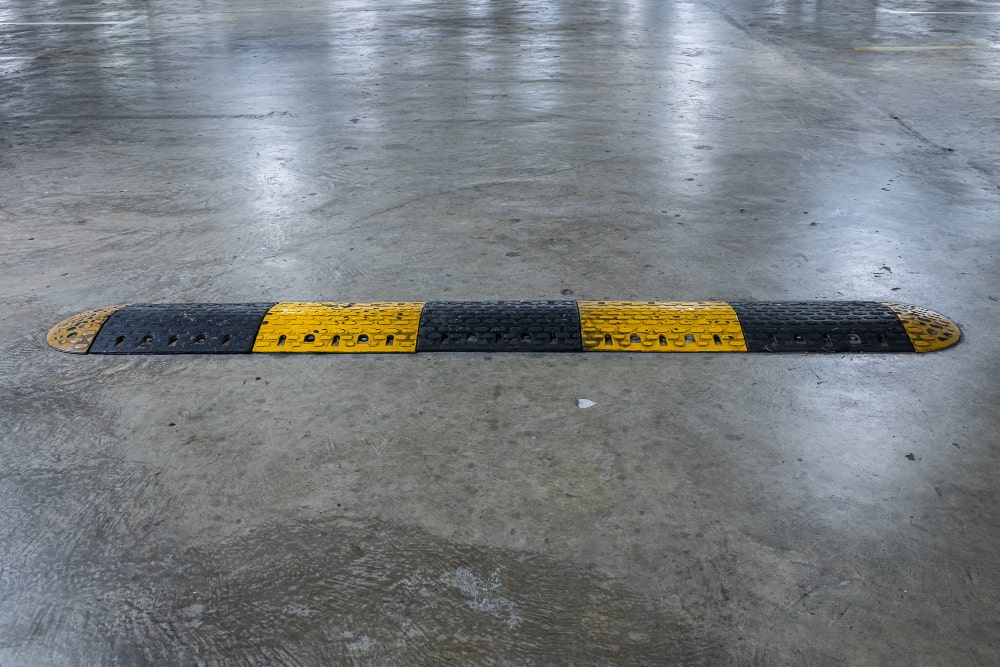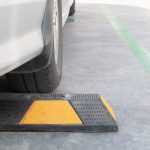Definition of speed bumps
Speed bumps, also known as speed humps, are traffic calming devices designed to reduce vehicle speed in areas where pedestrian safety is a concern. They are typically made of materials such as asphalt, rubber, or plastic and are installed on roads, parking lots, and residential areas. Speed bumps are characterized by their raised profile, which causes a jolt or bump when vehicles drive over them, forcing drivers to slow down. While speed bumps are effective in slowing down vehicles, they can also cause discomfort and inconvenience for drivers and passengers. Additionally, speed bumps may have varying impacts on different types of vehicles, such as low-clearance vehicles or emergency vehicles, which may need to navigate them at lower speeds or find alternative routes.
Importance of speed bumps
Speed bumps play a crucial role in maintaining road safety and traffic control. They are designed to slow down vehicles, especially in areas where speed limits need to be enforced, such as school zones, residential areas, and parking lots. Speed bumps help to reduce the risk of accidents by forcing drivers to slow down and pay attention to their surroundings. They also provide a visual cue for pedestrians to be cautious while crossing the road. Additionally, speed bumps can help to control traffic flow and discourage speeding, making the roads safer for everyone. Overall, the presence of speed bumps contributes to creating a safer and more organized road environment.
Types of speed bumps
There are three main types of speed bumps: asphalt, rubber, and plastic. Each type has its own advantages and disadvantages. Asphalt speed bumps are durable and can withstand heavy traffic, but they can be expensive to install and maintain. Rubber speed bumps are more affordable and easy to install, but they may not be as durable as asphalt. Plastic speed bumps are lightweight and easy to handle, but they may not be as effective in slowing down vehicles. When choosing a type of speed bump, it is important to consider factors such as budget, traffic volume, and desired level of effectiveness.
Pros of Asphalt Speed Bumps
Durability
When it comes to durability, asphalt speed bumps are known for their long-lasting performance. They can withstand heavy traffic and harsh weather conditions without deteriorating quickly. Rubber speed bumps are also durable and can resist damage from vehicles. However, they may wear out over time due to constant exposure to sunlight and extreme temperatures. Plastic speed bumps, on the other hand, are not as durable as asphalt or rubber. They can crack or break under heavy loads or extreme temperatures, making them less suitable for high-traffic areas. Overall, asphalt and rubber speed bumps offer superior durability compared to plastic speed bumps.
Cost-effectiveness
When considering the cost-effectiveness of different types of speed bumps, several factors need to be taken into account. Asphalt speed bumps are generally the most cost-effective option, as they are relatively inexpensive to install and maintain. Rubber speed bumps, although slightly more expensive than asphalt, offer durability and longevity, making them a cost-effective choice in the long run. Plastic speed bumps, on the other hand, may have a higher upfront cost but require minimal maintenance over time, making them a cost-effective option for areas with heavy traffic. Ultimately, the cost-effectiveness of each type of speed bump depends on the specific needs and budget of the project.
Ease of installation
When it comes to ease of installation, asphalt speed bumps are the most straightforward option. They can be easily installed by professionals using asphalt paving equipment. Rubber speed bumps, on the other hand, require more labor-intensive installation as they need to be glued or bolted to the ground. Plastic speed bumps fall in between, as they can be either glued or bolted for installation. Overall, asphalt speed bumps offer the easiest and most efficient installation process.
Cons of Asphalt Speed Bumps
Maintenance requirements
When it comes to maintenance requirements, asphalt speed bumps require regular inspections to check for cracks, potholes, and signs of wear. Any damage should be repaired promptly to ensure the longevity of the speed bumps. Rubber speed bumps are generally low maintenance and only require occasional cleaning to remove dirt and debris. Plastic speed bumps are also low maintenance and are resistant to cracking and chipping. However, they may fade over time and may need to be replaced if they become significantly worn or damaged.
Noise pollution
One of the main concerns with speed bumps is the noise they create. Asphalt speed bumps can produce a significant amount of noise, especially when vehicles drive over them at high speeds. This noise can be disruptive to residents living near the speed bumps, particularly during the night. Rubber and plastic speed bumps, on the other hand, tend to be quieter as they absorb more of the impact from vehicles. This makes them a more suitable option in areas where noise pollution is a concern.
Limited design options
One of the drawbacks of asphalt, rubber, and plastic speed bumps is the limited design options available. Unlike other types of speed bumps, such as concrete or metal, which can be easily customized and shaped to fit different aesthetic preferences, asphalt, rubber, and plastic speed bumps are generally limited to standard shapes and sizes. This can be a disadvantage for those looking to incorporate speed bumps seamlessly into their surroundings or to match a specific design theme. However, it’s important to note that while the design options may be limited, asphalt, rubber, and plastic speed bumps still serve their primary purpose of slowing down vehicles effectively.
Pros of Rubber Speed Bumps
Shock absorption
When it comes to shock absorption, asphalt speed bumps have limited effectiveness. They are rigid and do not provide much give when a vehicle passes over them, resulting in a jarring impact. On the other hand, rubber speed bumps are designed to absorb shock and provide a smoother ride. The rubber material allows for more flexibility, reducing the impact on vehicles and providing a more comfortable driving experience. Plastic speed bumps fall somewhere in between, offering moderate shock absorption capabilities. Overall, rubber speed bumps are the preferred choice when it comes to minimizing the impact of speed bumps on vehicles.
Versatility
When it comes to versatility, asphalt, rubber, and plastic speed bumps each have their own advantages. Asphalt speed bumps are durable and can withstand heavy traffic, making them ideal for high-traffic areas such as highways and parking lots. Rubber speed bumps are flexible and can be easily installed on various surfaces, including concrete and asphalt. They are also resistant to weather conditions and can be painted to enhance visibility. Plastic speed bumps are lightweight and easy to handle, making them suitable for temporary installations or areas where frequent repositioning is required. Overall, the versatility of these three types of speed bumps allows for their effective use in different settings and applications.
Eco-friendly
When it comes to eco-friendliness, rubber speed bumps take the lead. Rubber speed bumps are made from recycled materials, such as old tires, which helps reduce waste and minimize the use of new resources. Additionally, rubber speed bumps are more durable and have a longer lifespan compared to asphalt and plastic speed bumps. This means fewer replacements and less material being discarded. On the other hand, asphalt speed bumps are not considered eco-friendly as they require the extraction and processing of natural resources. Plastic speed bumps, although they can be made from recycled materials, are not as sustainable as rubber speed bumps due to their shorter lifespan and limited recyclability. Therefore, if you prioritize eco-friendliness, rubber speed bumps are the best choice.
Cons of Rubber Speed Bumps
Durability
When it comes to durability, asphalt speed bumps are known for their long-lasting performance. They can withstand heavy traffic and harsh weather conditions without deteriorating quickly. Rubber speed bumps are also quite durable, as they are made from high-quality materials that can resist wear and tear. However, over time, rubber speed bumps may start to crack or fade due to exposure to UV rays. Plastic speed bumps, on the other hand, are not as durable as asphalt or rubber. They are more prone to cracking and breaking, especially under heavy traffic. Additionally, plastic speed bumps can become brittle in extreme temperatures, reducing their lifespan. Therefore, if durability is a top priority, it is recommended to choose asphalt or rubber speed bumps over plastic ones.
Higher initial cost
One of the potential drawbacks of asphalt, rubber, and plastic speed bumps is their higher initial cost compared to traditional speed bumps. While asphalt speed bumps may be the most cost-effective option in the long run due to their durability, they require a significant upfront investment. Rubber and plastic speed bumps also tend to be more expensive initially, although they may offer advantages such as easy installation and maintenance. It is important for decision-makers to weigh the upfront cost against the long-term benefits when considering the installation of these types of speed bumps.
Discoloration over time
One of the potential drawbacks of asphalt, rubber, and plastic speed bumps is discoloration over time. Overexposure to sunlight, weather conditions, and regular use can cause the color of these speed bumps to fade or change. This can not only affect the aesthetic appeal of the speed bumps but also make them less visible to drivers, potentially compromising their effectiveness. Regular maintenance, such as applying UV-resistant coatings or replacing faded speed bumps, may be necessary to mitigate discoloration and ensure optimal visibility and functionality.
Pros of Plastic Speed Bumps
Lightweight
One of the advantages of plastic speed bumps is their lightweight nature. Unlike asphalt and rubber speed bumps, which can be heavy and difficult to install, plastic speed bumps are lightweight and easy to handle. This makes them a popular choice for temporary installations or areas where frequent repositioning is required. Additionally, the lightweight nature of plastic speed bumps makes them more cost-effective to transport and reduces the carbon footprint associated with transportation.
Reflective properties
Reflective properties are an important factor to consider when choosing between asphalt, rubber, and plastic speed bumps. Asphalt speed bumps typically have low reflective properties, making them less visible at night or in low light conditions. On the other hand, rubber and plastic speed bumps are designed with reflective materials or paint, which enhances their visibility. This increased visibility can improve safety by alerting drivers to the presence of the speed bumps, reducing the risk of accidents or damage to vehicles. Therefore, if visibility is a priority, rubber or plastic speed bumps may be a better choice.
Low maintenance
One of the major advantages of using asphalt, rubber, and plastic speed bumps is their low maintenance requirements. Unlike other types of speed bumps, such as concrete or metal, these materials are highly durable and resistant to wear and tear. They do not require frequent repairs or replacements, saving both time and money. Additionally, asphalt, rubber, and plastic speed bumps are easy to clean and maintain, as they can be quickly swept or washed with water. This low maintenance feature makes them a cost-effective option for controlling traffic and ensuring road safety.
Cons of Plastic Speed Bumps
Less durable
One of the cons of asphalt, rubber, and plastic speed bumps is that they are less durable compared to other materials. Over time, these speed bumps can deteriorate and become less effective in slowing down vehicles. Asphalt speed bumps are prone to cracking and breaking, especially in areas with extreme temperatures. Rubber speed bumps can wear down and lose their shape, particularly in high-traffic areas. Plastic speed bumps may fade and become brittle due to exposure to sunlight and harsh weather conditions. Therefore, it is important to regularly inspect and maintain these types of speed bumps to ensure their effectiveness and longevity.
Limited load-bearing capacity
One of the drawbacks of asphalt, rubber, and plastic speed bumps is their limited load-bearing capacity. These types of speed bumps are not designed to withstand heavy vehicles or excessive weight. If subjected to heavy loads, they may crack or break, rendering them ineffective in slowing down traffic. It is important to consider the weight limits of these speed bumps when installing them to ensure they can handle the expected traffic volume.
Higher risk of damage
One of the cons of using asphalt, rubber, and plastic speed bumps is the higher risk of damage. These types of speed bumps can be easily damaged by heavy vehicles or extreme weather conditions. Asphalt speed bumps, in particular, can crack or deteriorate over time, leading to a less effective traffic calming measure. Rubber and plastic speed bumps may also become worn out or dislodged, requiring frequent maintenance and replacement. This higher risk of damage not only impacts the effectiveness of the speed bumps but also increases the overall maintenance costs for the road authorities.
Conclusion
Considerations for choosing speed bumps
When choosing speed bumps, there are several important considerations to keep in mind. Firstly, it is essential to consider the durability of the material. Asphalt speed bumps are known for their longevity and ability to withstand heavy traffic. Rubber speed bumps are a popular choice due to their flexibility and ability to absorb impact, making them suitable for areas with high pedestrian traffic. Plastic speed bumps are lightweight and easy to install, but they may not be as durable as asphalt or rubber. Another factor to consider is the cost. Asphalt speed bumps tend to be more expensive upfront, but they require less maintenance over time. Rubber and plastic speed bumps are generally more affordable, but they may need to be replaced more frequently. Additionally, it is important to consider the specific needs of the location. For example, if noise reduction is a priority, rubber speed bumps may be the best option as they produce less noise compared to asphalt or plastic. Overall, weighing these considerations will help in choosing the most suitable speed bumps for a particular setting.
Importance of proper installation and maintenance
Proper installation and maintenance of speed bumps are crucial for ensuring their effectiveness and longevity. When speed bumps are not installed correctly, they may not effectively slow down vehicles or may cause damage to vehicles. Regular maintenance, such as cleaning and repainting, is necessary to keep speed bumps visible and in good condition. Additionally, proper maintenance can help identify any issues or damage that may require repairs. By prioritizing the installation and maintenance of speed bumps, communities can ensure the safety of their residents and promote responsible driving.
Final thoughts
In conclusion, when considering the pros and cons of asphalt, rubber, and plastic speed bumps, it is important to weigh the different factors. Asphalt speed bumps are durable and cost-effective, but they may require more maintenance over time. Rubber speed bumps offer better noise reduction and are more environmentally friendly, but they may not be as durable as asphalt. Plastic speed bumps are lightweight and easy to install, but they may not withstand heavy traffic or extreme weather conditions. Ultimately, the choice of speed bump material depends on the specific needs and requirements of the location. It is important to carefully consider all the factors before making a decision.










